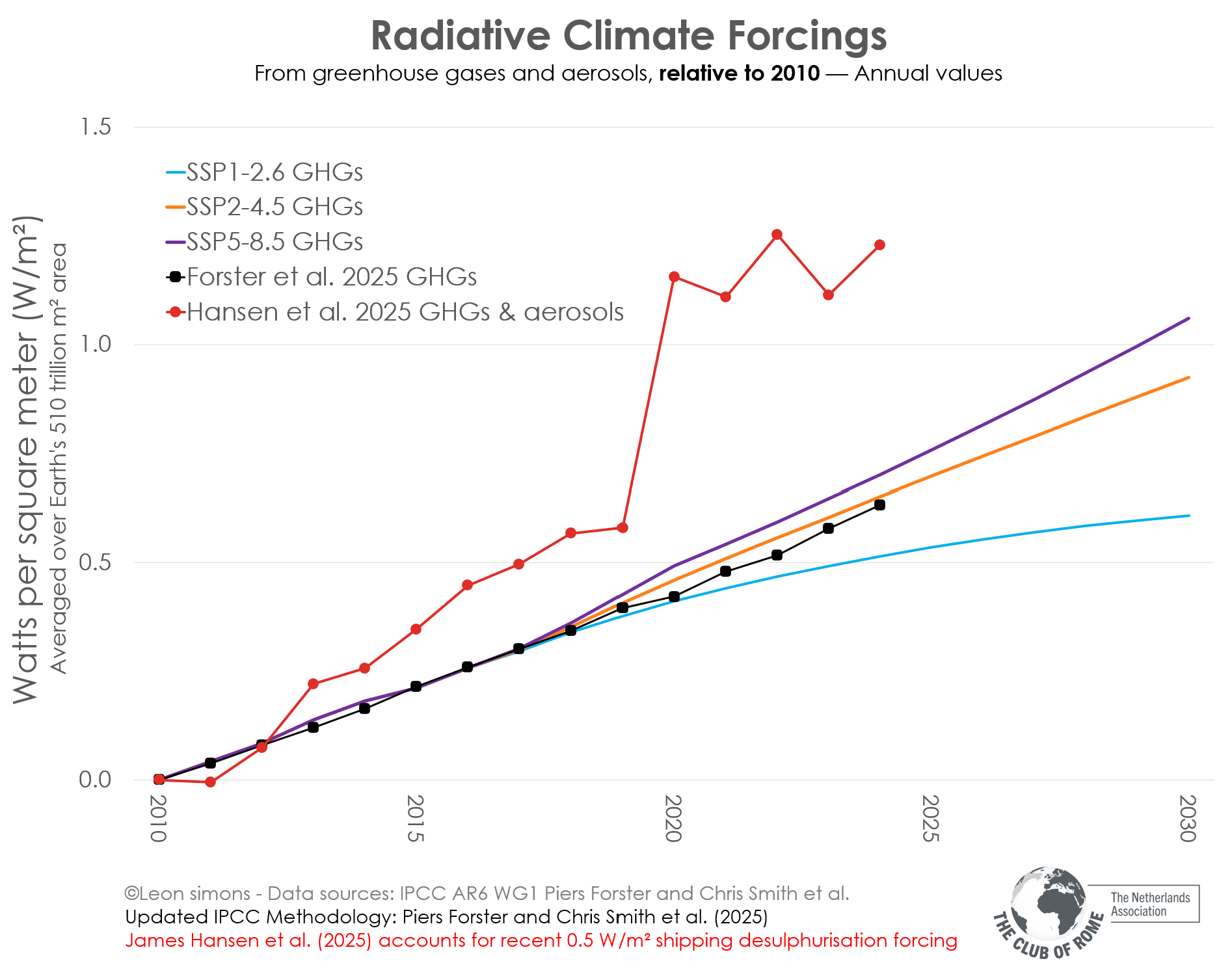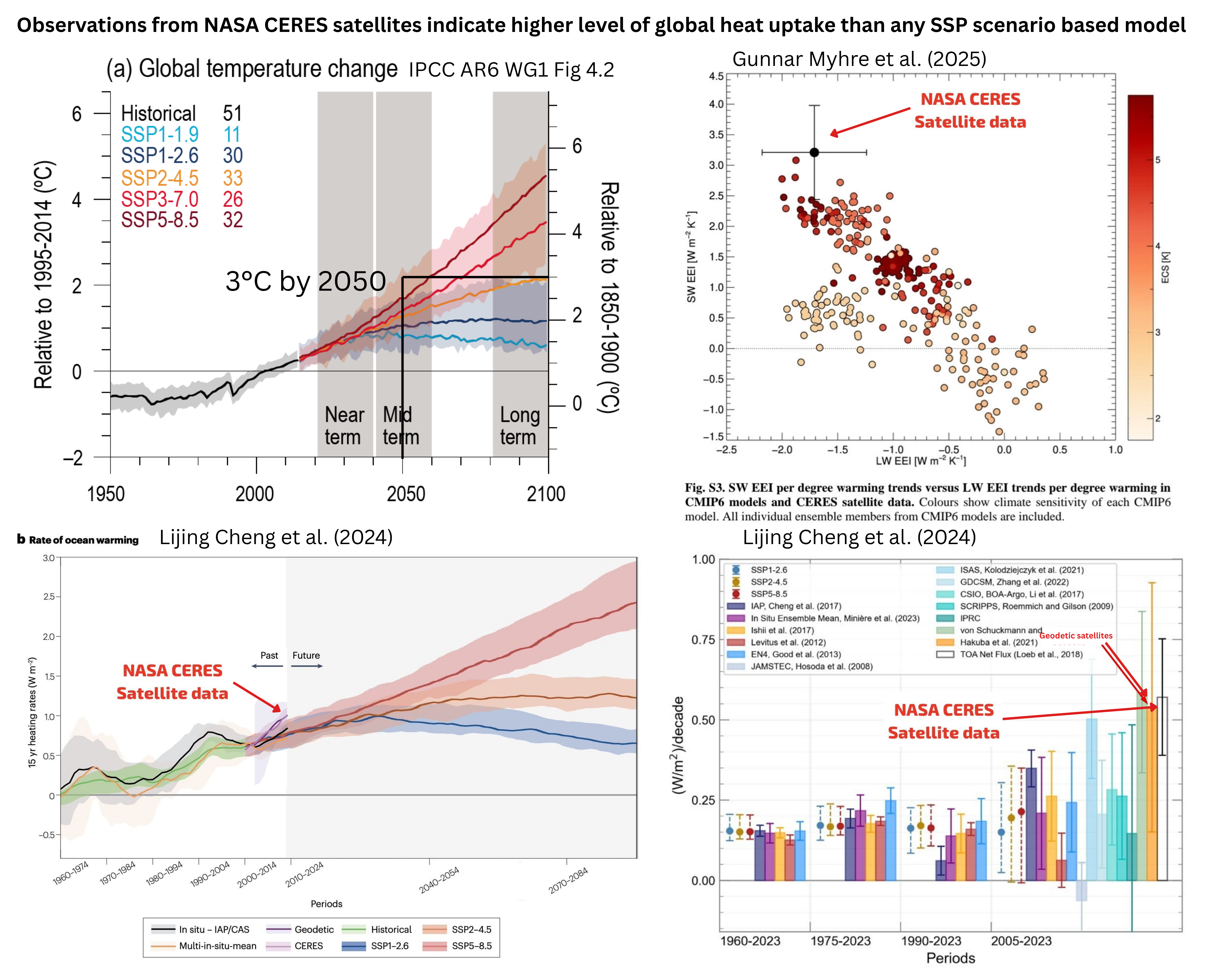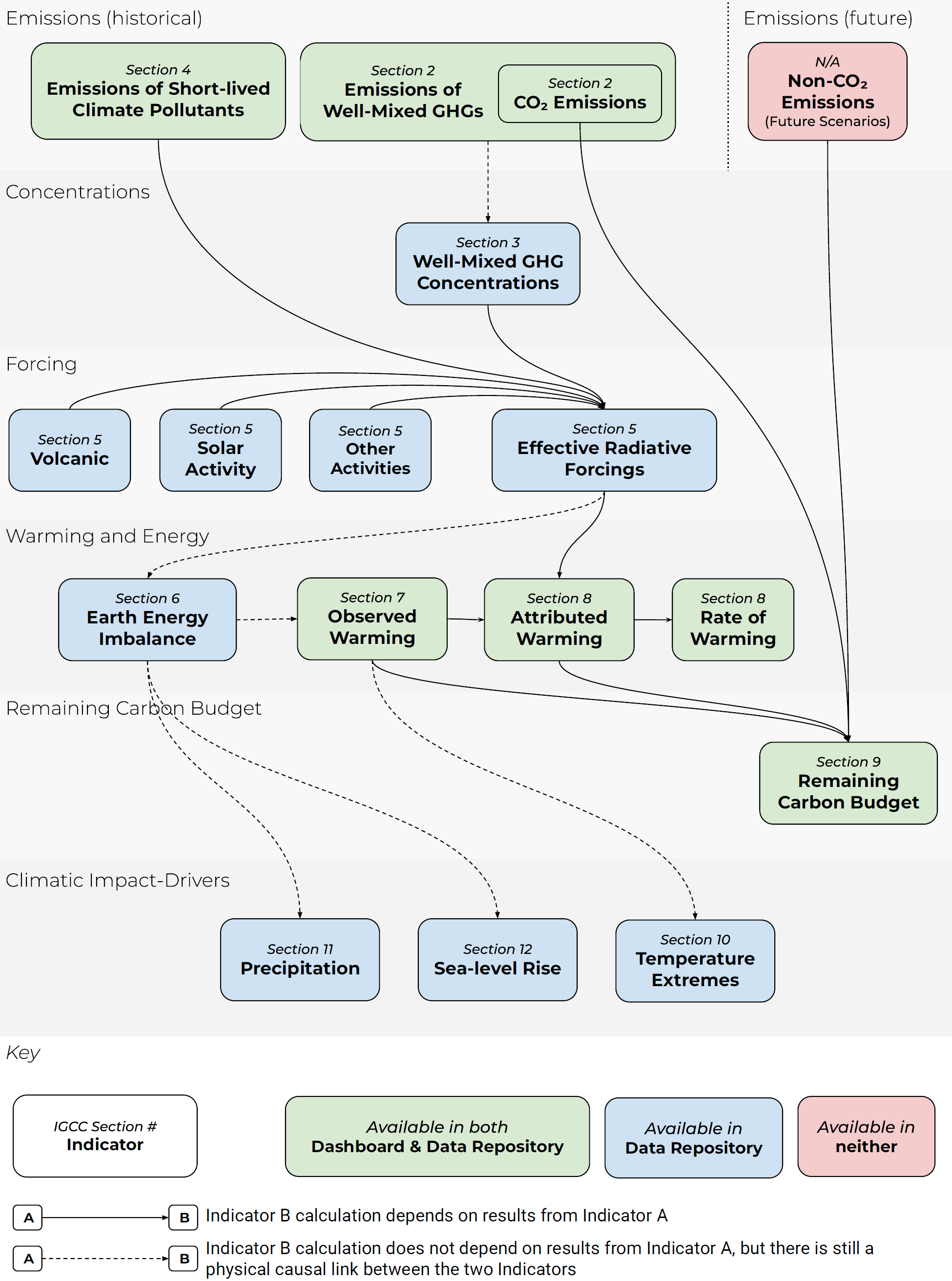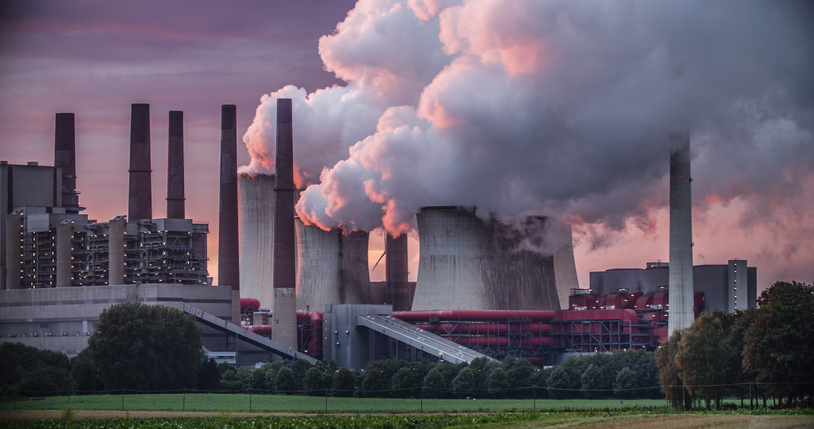
IPCC authors, Bill Gates and UNEP are all downplaying future climate change (*)
10-11-2025 Door: Leon Simons
* Artikelen en video's representeren niet noodzakelijkerwijs de opinie van Burgerplatform. Ze worden ter beschikking gesteld ten behoeve van de eigen oordeelsvorming van de bezoeker en interne dialoog.

Media around the world are publishing headlines telling the world that we have avoided warming of +3°C by 2100, while observations show us that there is a serious risk of reaching that level already by 2050!
The red box in the top right (from IPCC methodology update by Piers Forster et al. (2025) is the smoking gun. There is no transparency of assumed future emissions of 'Non-CO2 Emissions', while those mainly determine the rate of warming over the next decades.
UNEP and Climate Action Tracker (used by Bill Gates to make his false statement that 'consensus is that global warming will stay below 3°C by 2100 with limited action') don't provide these either.
Using NASA CERES satellites observations, the present and near term climate forcing increase is even higher than based on the highest emission scenario (SSP5-8.5)
That is caused by the reduced impact of cooling air pollution, which had been hiding more of the greenhouse gas forcing.
James Hansen and colleagues estimate in a paper published earlier this year that the ~80% reduction of shipping sulphur aerosols caused a climate forcing of about +0.5 W/m², which climate impact would be comparable to over 10 years of global greenhouse gas emissions.
The final two graphs show combined forcing of greenhouse gases and aerosols relative to 2010, when according to the IPCC methodology was +2.2 W/m² above 1750 (before the start of industrial revolution).
The last one is a comparison between greenhouse gases only and greenhouse gases and aerosols from Hansen et al., which shows why it is crucial to take into account aerosols if you want to understand the acceleration of regional and global warming and prepare for the consequences.
As countries around the world come together to talk about climate change, they should at least understand the primary drivers which causes those changes.





displayfoldercontent|/doc/leonsimons/20251110-forcings-article|figure
Deel dit bericht
pageviews: 34
tinyurl:
link

